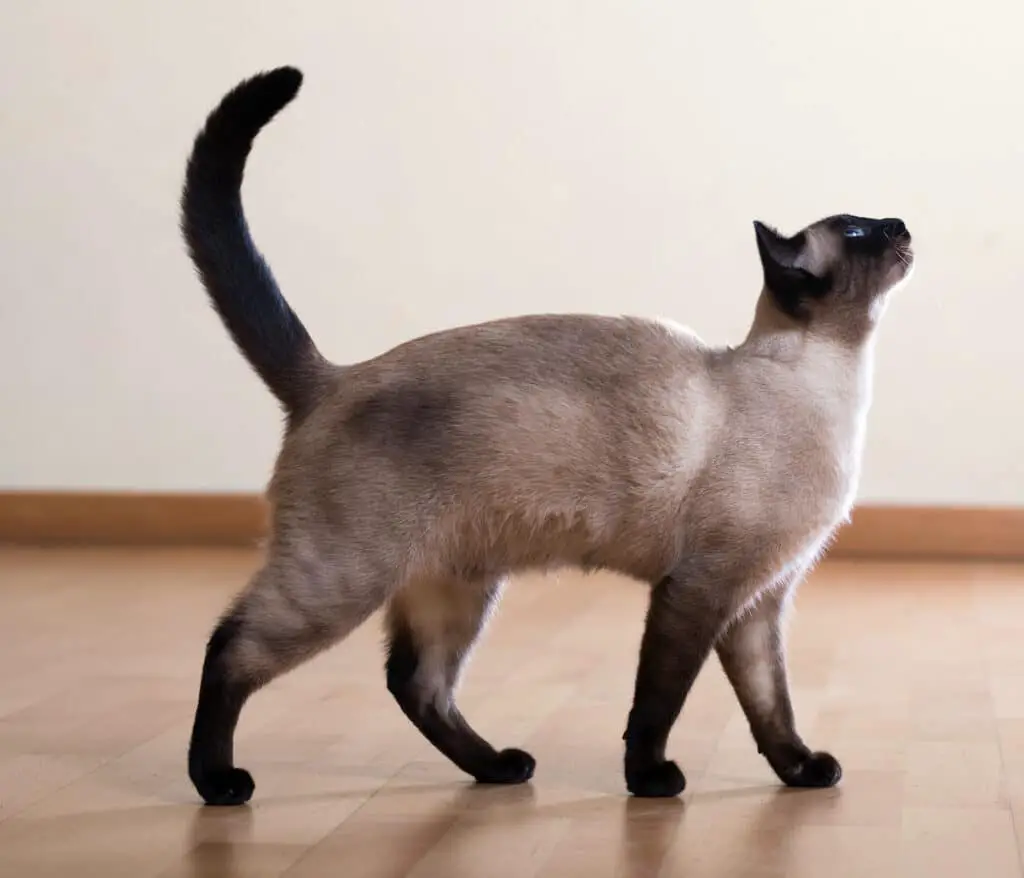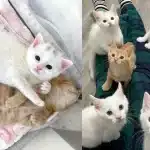Cats are fascinating creatures with a complex communication system. They use various methods to communicate with their humans, and one of the most interesting ways they do so is through their tail. Knowing how to read cat tail language can help you be a better owner by better understanding how they’re feeling.
From the straight up tail to the quivering tail, we’ll go through each of the six main cat tail languages you need to know.
1. The Straight Up Tail
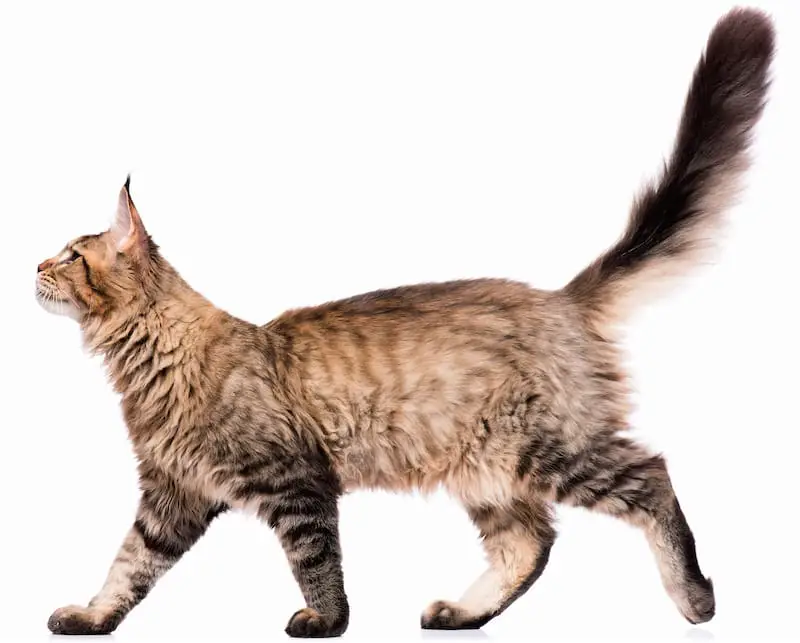
The straight up tail is a sure sign your cat is feeling happy and confident. It’s comparable to how dogs wag their tail excitedly when they greet their owners. The straight up tail for cats means they’re excited to see you or whatever it is they’re encountering.
You’ll see cats use the straight up tail with humans, other cats, and other pets. It’s usually used when cats are already familiar with whoever they’re greeting; they already feel happy and comfortable around them.
You’ll almost certainly see the straight up tail when you pat your cat’s bum. Most cats love having their bums patted, and the straight up tail confirms that contentment.
The straight up tail is one of many ways to know if your cat loves you. So if you see the straight up tail with your cat, know that you’re indeed one of their favorite people!
2. The Puffed-Up Tail

Quite the opposite of the straight up tail is the puffed up tail. If your cat’s tail suddenly puffs up like a cotton ball, it’s a sign that your cat is feeling scared, threatened, or angry.
Cats puff up their tails in response to a threat because it makes them look bigger and scarier themselves. You may even see your cat turn sideways with an arched back and head low; this is known as the Halloween cat pose. And they do indeed look pretty scary when they do this, but that’ the point!
So, if you see your cat’s tail puffed up give them some space or offer comforting words to help them calm down. Believe it or not, cats look to their owners for comfort and reassurance, so using soothing words can help signal that everything is ok.
3. Twitching or Thrashing Tail
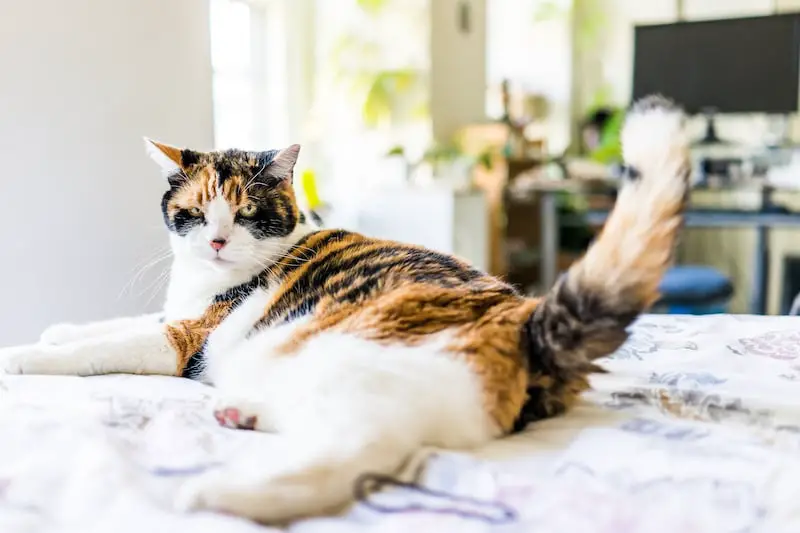
The twitching tail is perhaps the most misunderstood in cat tail language. Most people assume cats twitch their tail because they’re happy and excited, like how a dog wags his tail. But that couldn’t be further from the truth.
If your cat’s tail is twitching back and forth rapidly, it’s a sign that your cat is agitated, nervous, or anxious. Usually when cats do this, they won’t show any other signs of agitation at first. It’s only if they’re continually agitated that they’ll combine the twitching tail with other signs like growling, hissing or flattening their ears back on their head.
So, if you see your cat’s tail twitching and thrashing back and forth, leave them alone. Give your cat space to calm down on their own, or try comforting them with a soothing voice. Whatever you do, don’t pick your cat up or try holding them. That’s usually what instigates the twitching tail in the first place, so just leave them alone and let them come to you when they’re ready.
4. The Slow Moving Tail
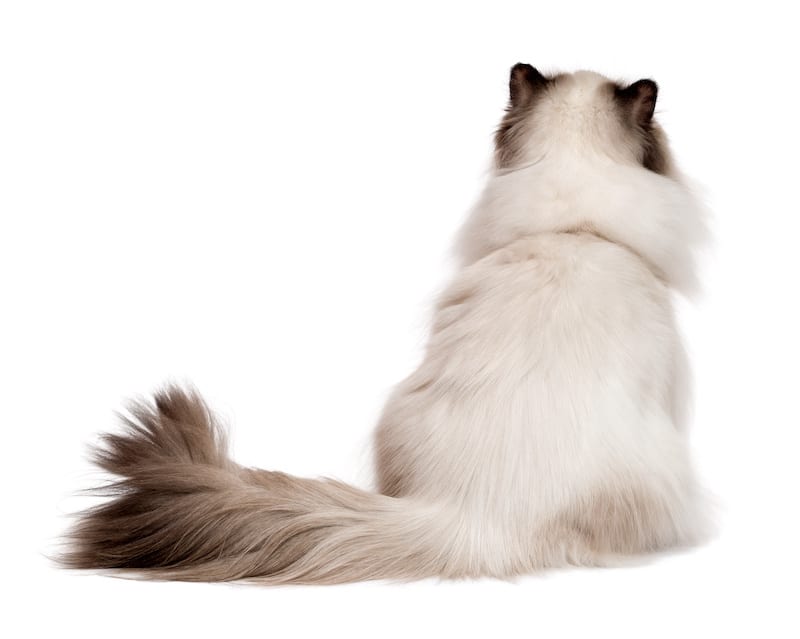
When your cat’s tail is moving slowly from side to side, it’s a sign that your cat is curious or interested in something. This is a common tail movement when your cat is observing something intently, like a bird outside the window. The slow moving tail might be interspersed with no movement at all; it’s really influenced by whatever they’re intently watching.
As such, the slow moving tail is probably going to be combined with a fixed, intent stare with wide eyes. The tail is probably laying flat on the ground, and your cat is likely hunched low. And they’re most likely deciding whether to pounce or not.
Because the slow loving tail is not necessarily a sign of agitation or stress, you can still attempt to interact with your cat. But just know they may not be in the mood for cuddles just yet; they have an object of curiosity they need to explore first!
5. The Tucked-In Tail
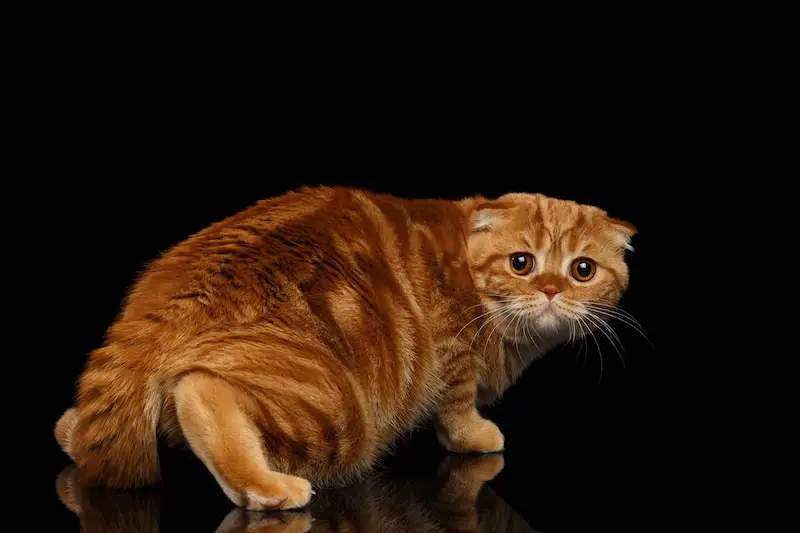
Like dogs, cats will tuck their tail between their legs if they’re scared, anxious or submissive. It’s an instinctual defense posture they do when they’re feeling insecure.
You’ll see the tucked-in tail more with cats that aren’t as aggressive. That’s because their tendency is towards submissiveness and withdrawal vs. attacking.
Greeting new people or pets, going to the vet, and getting their nails clipped are all cases where you might see the tucked-in tail. It’s important to be cautious with the tucked-in tail, because if a cat feels threatened enough it might quickly turn into a hiss or a swipe in order to escape.
You can help your cat feel less scared if they’re using the tucked-in tail by using a soothing voice and petting them where they like to be pet. Familiar scents and voices can help cats calm down if they’re feeling anxious.
6. The Quivering Tail
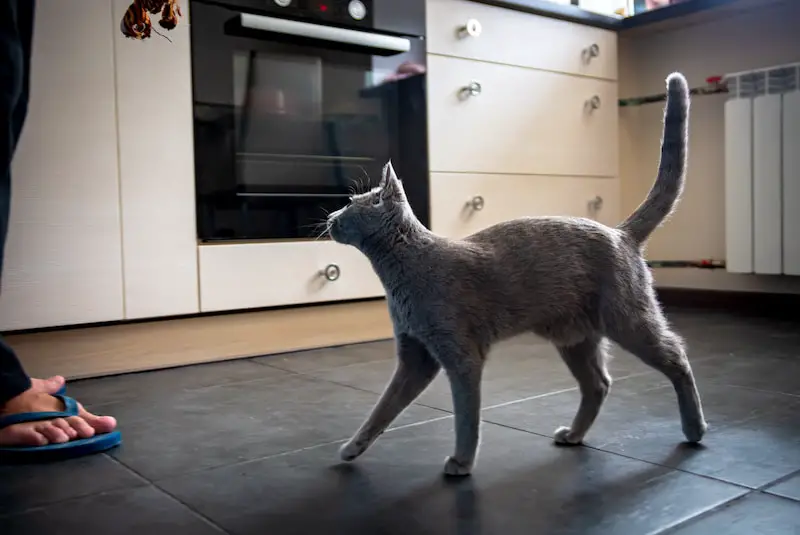
The quivering tail is not to be confused with the twitching tail. The main difference between these two tail behaviors is the quivering tail makes much smaller movements. It’s more like a vibrating or “shivering” tail.
When your cat’s tail is quivering, it’s a sign that your cat is excited or aroused. This is a common tail movement during playtime or when your cat is anticipating a meal. Your cat may even let out a little meow or purr to show its excitement.
Oftentimes you’ll also see your cat stretch out big and rub against a wall while they’re doing the quivering tail. That’s them making themselves big and noticeable in case you were going to forget to give them that tasty treat you had in your hand.
Conclusion
In conclusion, reading your cat’s tail language is an essential skill for any cat owner. By understanding the nuances of your cat’s tail movements, you can learn to better communicate with your feline friend and provide it with the care and attention it needs. Plus, it’s a fun way to connect with your cat and deepen your bond. So, the next time your cat wags its tail, take a closer look, and try to read the message it’s trying to convey. Happy tail-watching!
FAQs: How to Read Cat Tail Language
Yes, cat tail language is very real, much like how dog tail language is real. In fact, cats use their tails to communicate a wide range of emotions and intentions. A cat’s tail movements can indicate whether it’s feeling happy, scared, angry, or curious, among other emotions. Understanding your cat’s tail language can help you communicate with your cat more effectively, as well as provide better care and attention. So, the next time you see your cat’s tail moving, pay attention to its movements and try to understand the message your cat is trying to convey.
Cats have a natural instinct to mark their territory, and one way they do this is by rubbing their scent onto objects and people. When a cat rubs against you, it’s actually marking you as a part of its territory. This behavior is called bunting, and it’s a way for cats to spread their scent and feel more secure in their surroundings.
Another reason why cats rub against their owners is to show affection. When cats rub against you, they’re also expressing their affection and trust in you. They may also be seeking attention or asking for food or playtime.
While some cats enjoy having their belly rubbed, it’s important to remember that not all cats do. In fact, for many cats, having their belly touched can be a trigger for defensive behavior, such as biting or scratching.
Cats typically expose their belly as a sign of relaxation and trust, but it doesn’t necessarily mean they want it to be touched. When a cat rolls over and shows its belly, it’s actually exposing a vulnerable area, and it’s a sign that the cat feels safe and comfortable in its surroundings.
When cats lift their bum when you pet them, it’s actually a natural reflex called the “lordosis reflex.” This reflex is triggered when a cat is being petted or scratched in the lower back or tail area. It causes the cat’s spine to arch and the rear end to lift up.
This reflex is a sign that your cat is enjoying the sensation of being petted and is getting into a relaxed, happy state. It’s a similar response to the way dogs wag their tails when they’re happy. Some cats may also lift their tails and expose their rear end as a way to initiate play or as an invitation to other cats to come closer and interact.

